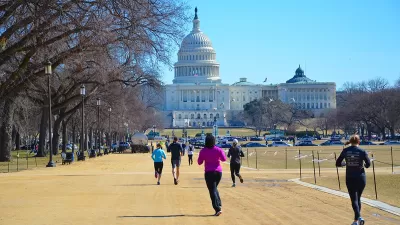Melanie Haiken shares insight into the findings of the American Fitness Index (AFI), which assesses the "Health and Community Fitness Status of the 50 Largest Metropolitan Areas."

The American College of Sports Medicine, the largest sports medicine and exercise science organization in the world, has released the newest edition of the American Fitness Index (AFI).
Planners should pay attention to the rating because it considers infrastructure rather than just culture: "The key to who wins and who loses in this particular competition is infrastructure. The AFI’s mission is to encourage cities to prioritize the health of their residents and spend and make improvements accordingly. So a city that just happens to have lots of gym-going, veggie-eating residents (think New York) is not necessarily going to rate, because the city’s culture and politics are not at work supporting residents in making health and lifestyle changes."
That's why this year's rating consider WalkScore ratings for the first time.
"One thing is clear; the west is winning the healthy lifestyle war. With the addition of San Diego, 6 of the top 10 cities are now on the West Coast. The Midwest boasts just one city in the top 10, the south not one."
As for some of the indicators of health in the country's healthiest metro, obesity rates are a good place to look, because "all five of the healthiest cities boasted obesity rates under 23 percent and smoking rates under 18 percent. (Just 10 percent for San Francisco and 13 percent for D.C.)"
FULL STORY: Top 20 Healthiest Cities In America 2014

Planetizen Federal Action Tracker
A weekly monitor of how Trump’s orders and actions are impacting planners and planning in America.

Maui's Vacation Rental Debate Turns Ugly
Verbal attacks, misinformation campaigns and fistfights plague a high-stakes debate to convert thousands of vacation rentals into long-term housing.

Restaurant Patios Were a Pandemic Win — Why Were They so Hard to Keep?
Social distancing requirements and changes in travel patterns prompted cities to pilot new uses for street and sidewalk space. Then it got complicated.

In California Battle of Housing vs. Environment, Housing Just Won
A new state law significantly limits the power of CEQA, an environmental review law that served as a powerful tool for blocking new development.

Boulder Eliminates Parking Minimums Citywide
Officials estimate the cost of building a single underground parking space at up to $100,000.

Orange County, Florida Adopts Largest US “Sprawl Repair” Code
The ‘Orange Code’ seeks to rectify decades of sprawl-inducing, car-oriented development.
Urban Design for Planners 1: Software Tools
This six-course series explores essential urban design concepts using open source software and equips planners with the tools they need to participate fully in the urban design process.
Planning for Universal Design
Learn the tools for implementing Universal Design in planning regulations.
Heyer Gruel & Associates PA
JM Goldson LLC
Custer County Colorado
City of Camden Redevelopment Agency
City of Astoria
Transportation Research & Education Center (TREC) at Portland State University
Jefferson Parish Government
Camden Redevelopment Agency
City of Claremont





























